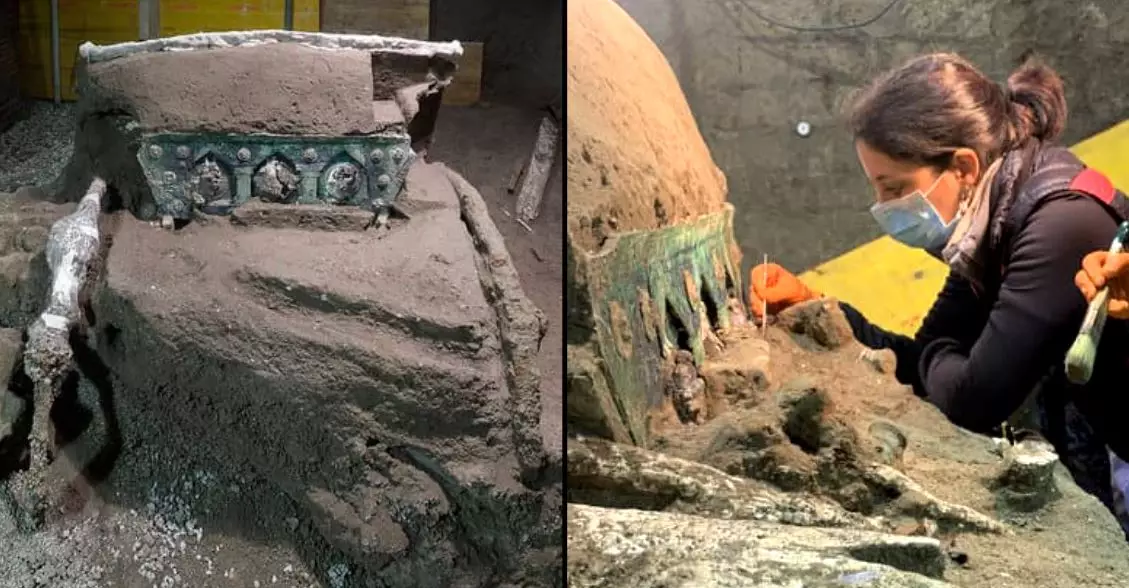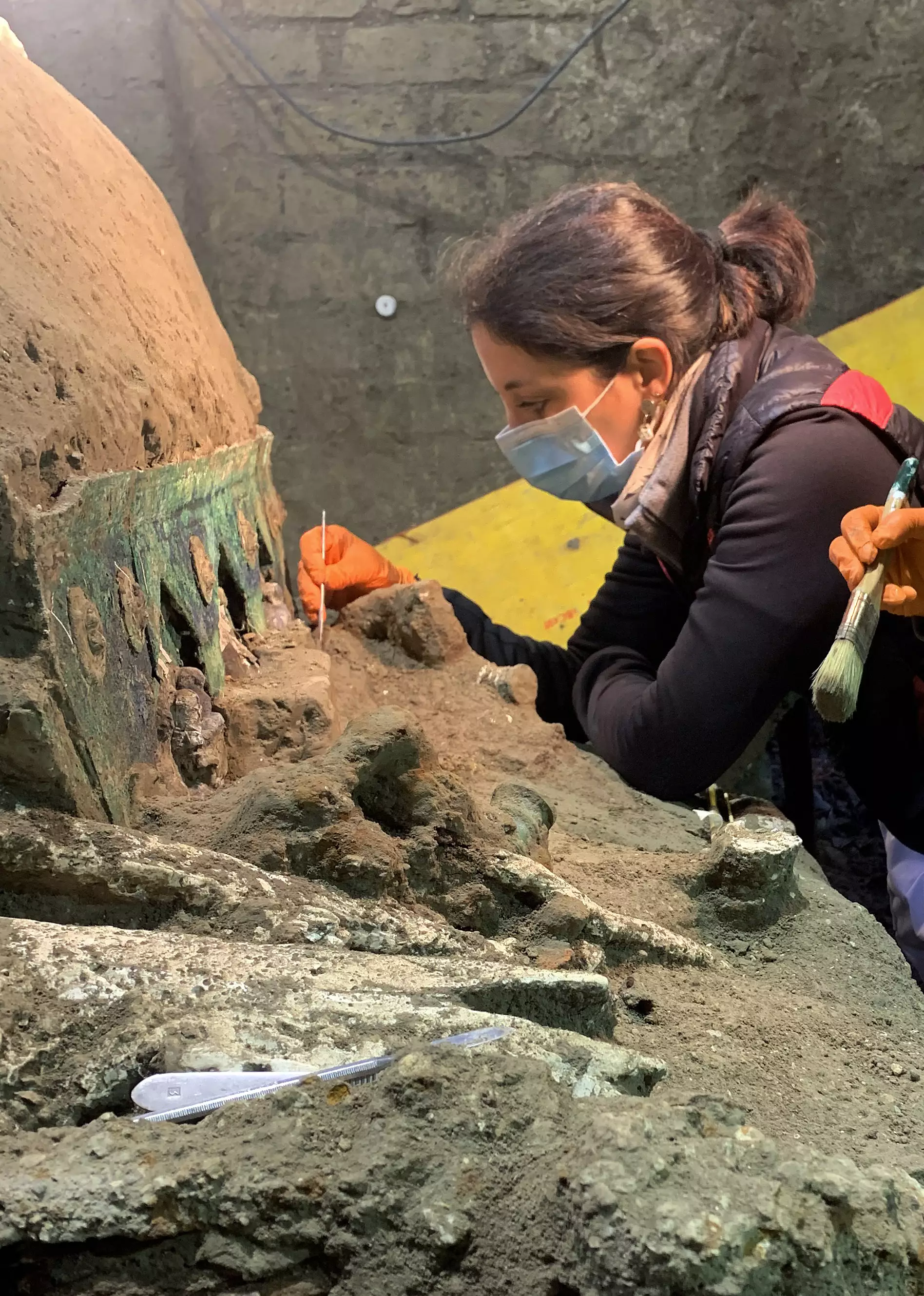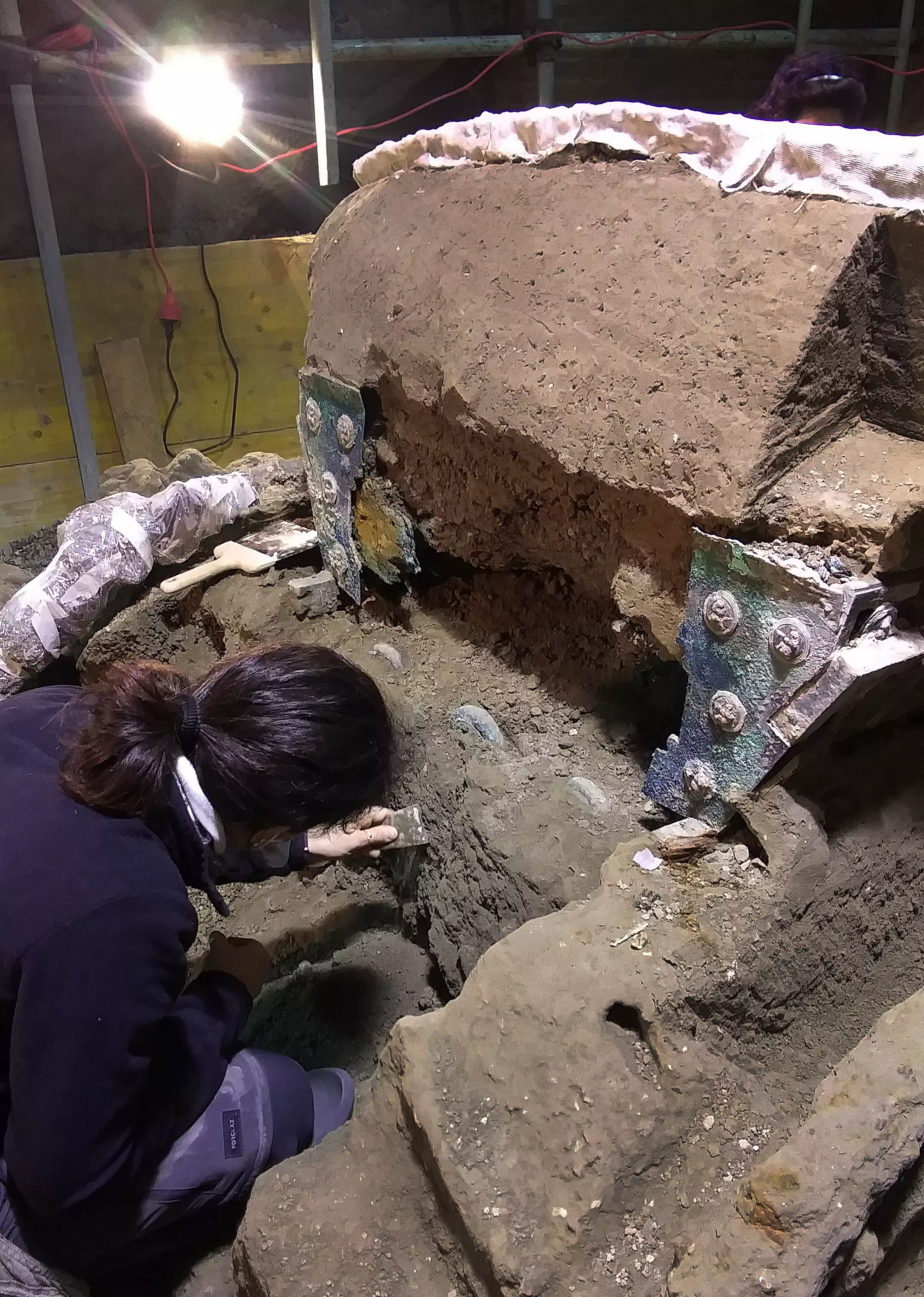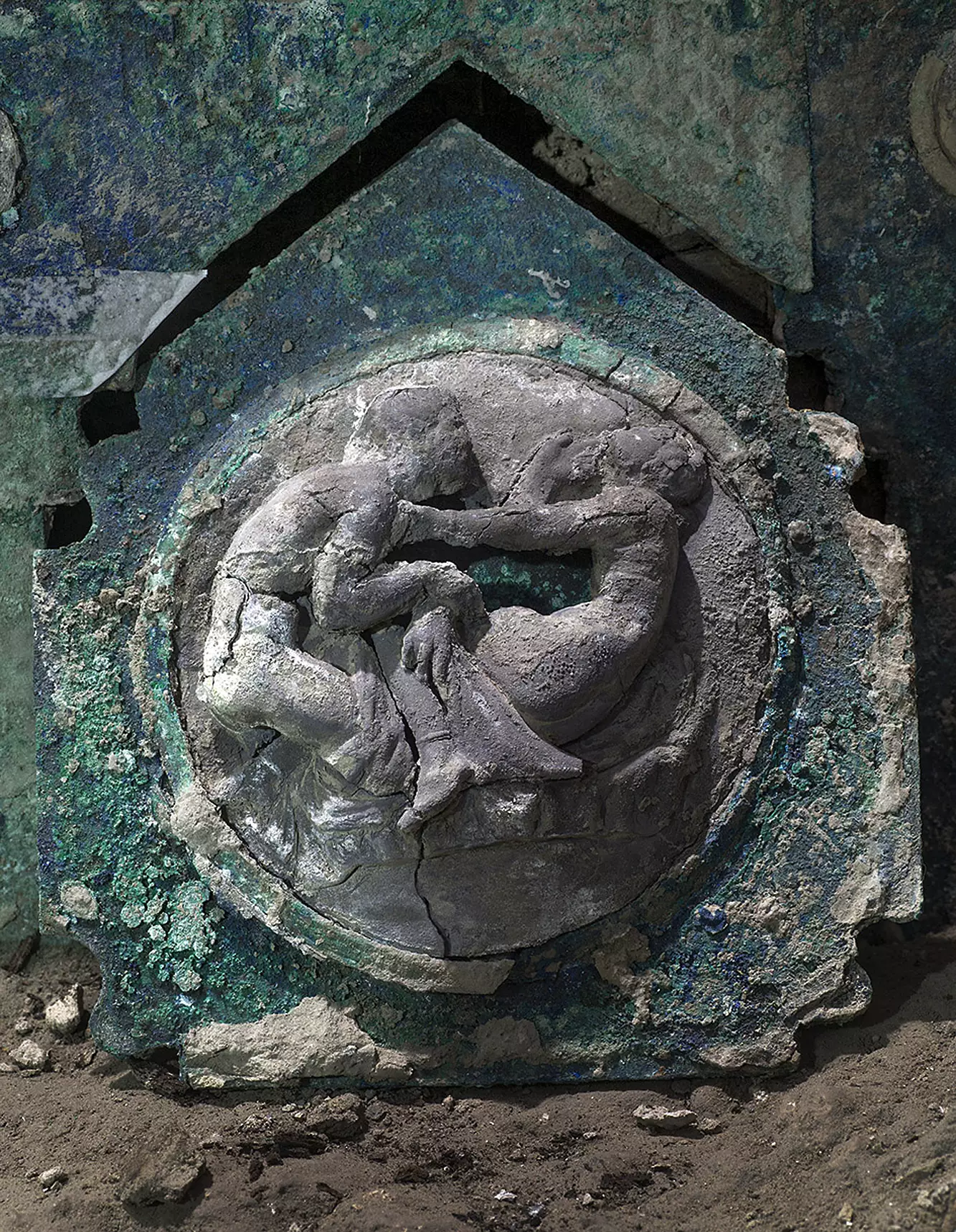
Archaeologists have made the exciting discovery of a Roman chariot near the famously buried city of Pompeii in Italy. Watch footage of the discovery below:
Pompeii was famously devastated by a volcanic eruption from nearby Mount Vesuvius in 79AD, with the entire city eerily preserved after being covered in ash from the blast.
Advert
As a result, the area has been a hotbed for archaeological discoveries that have helped illustrate what life was like for the Roman Empire around that period of time - but this latest find has been described as having 'no parallel' by experts.
The four-wheeled carriage made of iron, bronze and tin is almost perfectly preserved and was found near the stables of an ancient villa at Civita Giuliana, around 700 metres north of the walls of ancient Pompeii.
It was found in a porch in front of the stable, which is already a notable site - in 2018, the remains of three equids, including a harnessed horse, were found there.

Massimo Osanna, the outgoing director of the Pompeii archaeological site, said the carriage was the first of its kind discovered in the area.
Advert
Osanna said: "This is an extraordinary discovery that advances our understanding of the ancient world."
He added that the carriage would have 'accompanied festive moments for the community, [such as] parades and processions'.
Although previous vehicles have been found in Pompeii over time, this is the first ceremonial one to have been unearthed, prompting the country's culture ministry to call it 'a unique find, without any precedent in Italy'.

Pompeii is about 14 miles southeast of Naples and was home to around 13,000 people when it was buried under ash, pumice pebbles and dust after being met with an eruption equivalent to the force of multiple atomic bombs.
Advert
Every single resident died instantly when the blast hit. The pyroclastic flow would have been up to 500°C hot and would've come down on the city at a high speed.
A pyroclastic flow is more dangerous than lava because it travels much faster, reaching speeds of around 450mph.
Around Pompeii lies many preserved bodies of humans and animals in states of frozen animation as the resident unsuccessfully tried to run away or other hide from the relentless surge of hot ash and pumice.

The city remained buried under the rubble undiscovered until the 16th century with excavations beginning circa 1750.
Advert
"Pompeii continues to amaze us with its discoveries and it will do so for many years, with 20 hectares still to be dug up," said Culture Minister Dario Franceschini.
A rare documentation of Greco-Roman life, Pompeii is one of Italy's most popular attractions and a UNESCO World Heritage Site.
Featured Image Credit: PATopics: World News, History, Italy